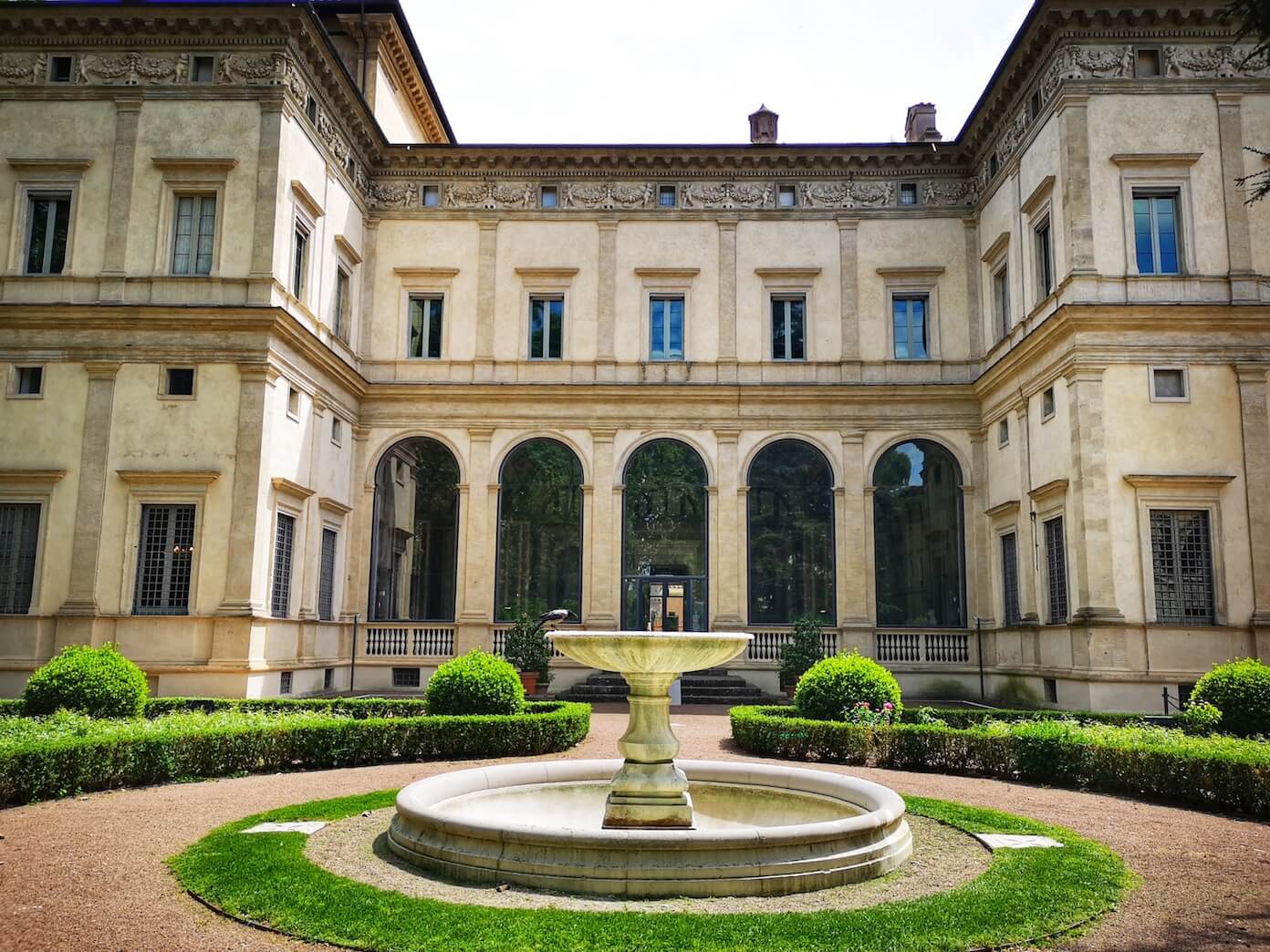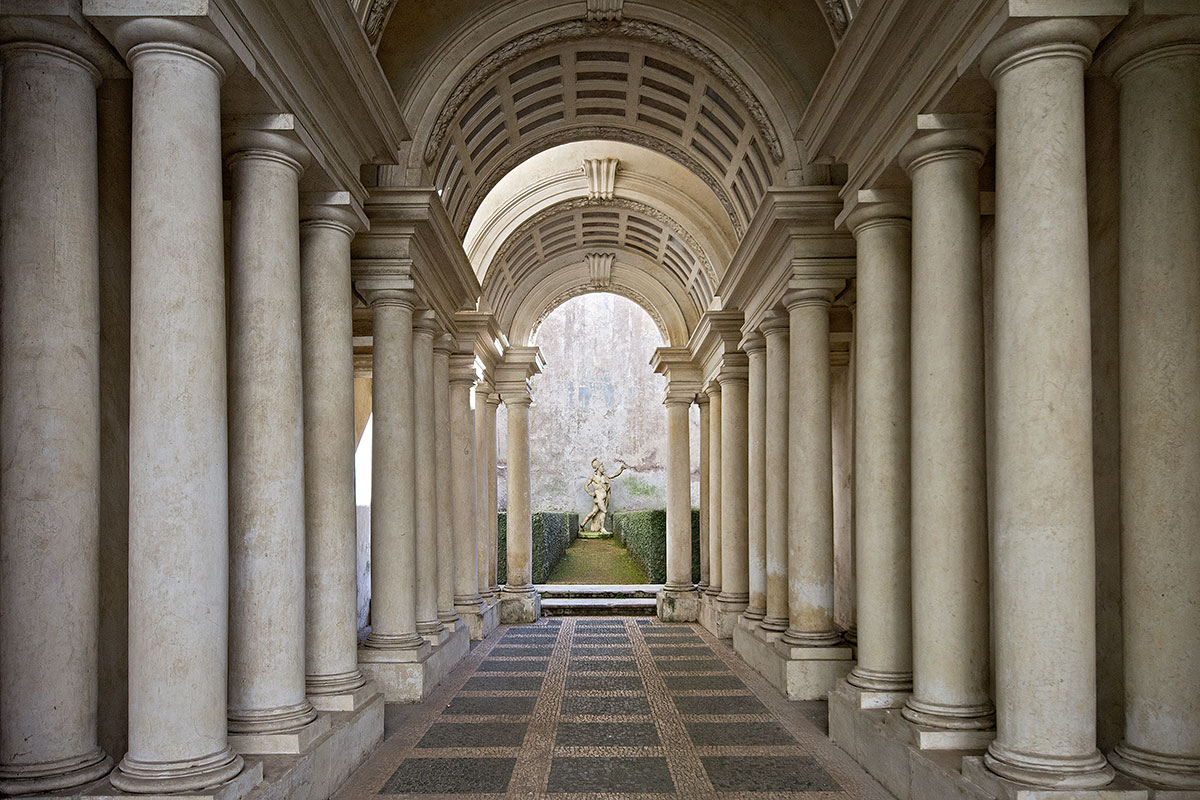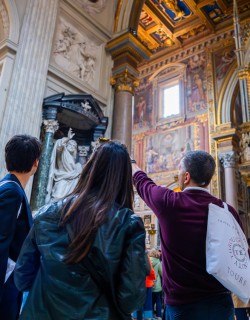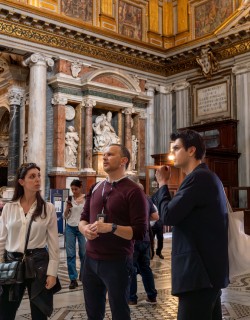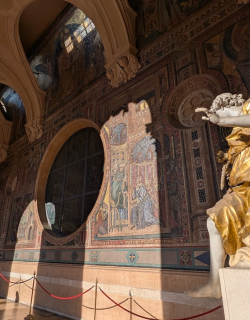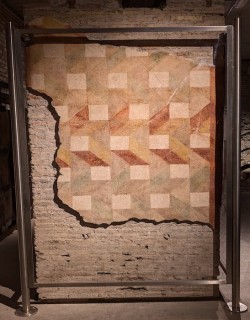From the smoky intrigues of the papal court to the glittering salons of princely families, no story of Rome can be written without taking a peek into the city’s array of grand palaces. Not only are these opulent edifices architectural masterpieces and treasure chests of art, they also offer a rare glimpse into the private lives of Rome’s elite: their rivalries, romances, and the lengths they went to immortalize themselves in stone and fresco.
Whether it’s a Baroque fantasia erupting with bees and allegories, a Renaissance villa painted with tales of love and mythology, or a beguiling secret gallery hidden behind a stuccoed façade, each palace on this list invites you into a different chapter of the city’s endlessly fascinating story.
This is your guide to the finest palaces in Rome - a journey through art, ambition, and architectural genius, where history is vibrantly, fascinatingly alive.
Palazzo Barberini
A visit to Palazzo Barberini feels like stepping into a Baroque fever dream. Commissioned in the 1620s by Pope Urban VIII’s indomitable Barberini clan, this sumptuous palace was designed by the finest architects of 17th century Rome - including arch rivals Gianlorenzo Bernini and Francesco Borromini, whose sinuous spiral staircase here is one of the most charming pieces of design in the city.
The entire palace, including its decorations, were conceived to burnish the reputation of the Barberini: it all culminates in the jaw-dropping grand salon, where Pietro da Cortona’s dizzying ceiling fresco, The Triumph of Divine Providence, dissolves the room’s architecture into a vortex of color, allegory, and buzzing Barberini bees.
Today the palace is home to the superb painting collection of the Galleria Nazionale d’Arte Antica, where a series of dramatic masterpieces by Caravaggio (including Judith and Holofernes and Narcissus) sit sit cheek by jowl with Renaissance stunners like Raphael’s portrait of his lover La Fornarina and Filippo Lippi’s delightful Annunciation.
The result is an immersive and audacious blend of art, architecture and history, making Palazzo Barberini an intoxicating introduction to the over-the-top world of Baroque Rome.
Villa Borghese
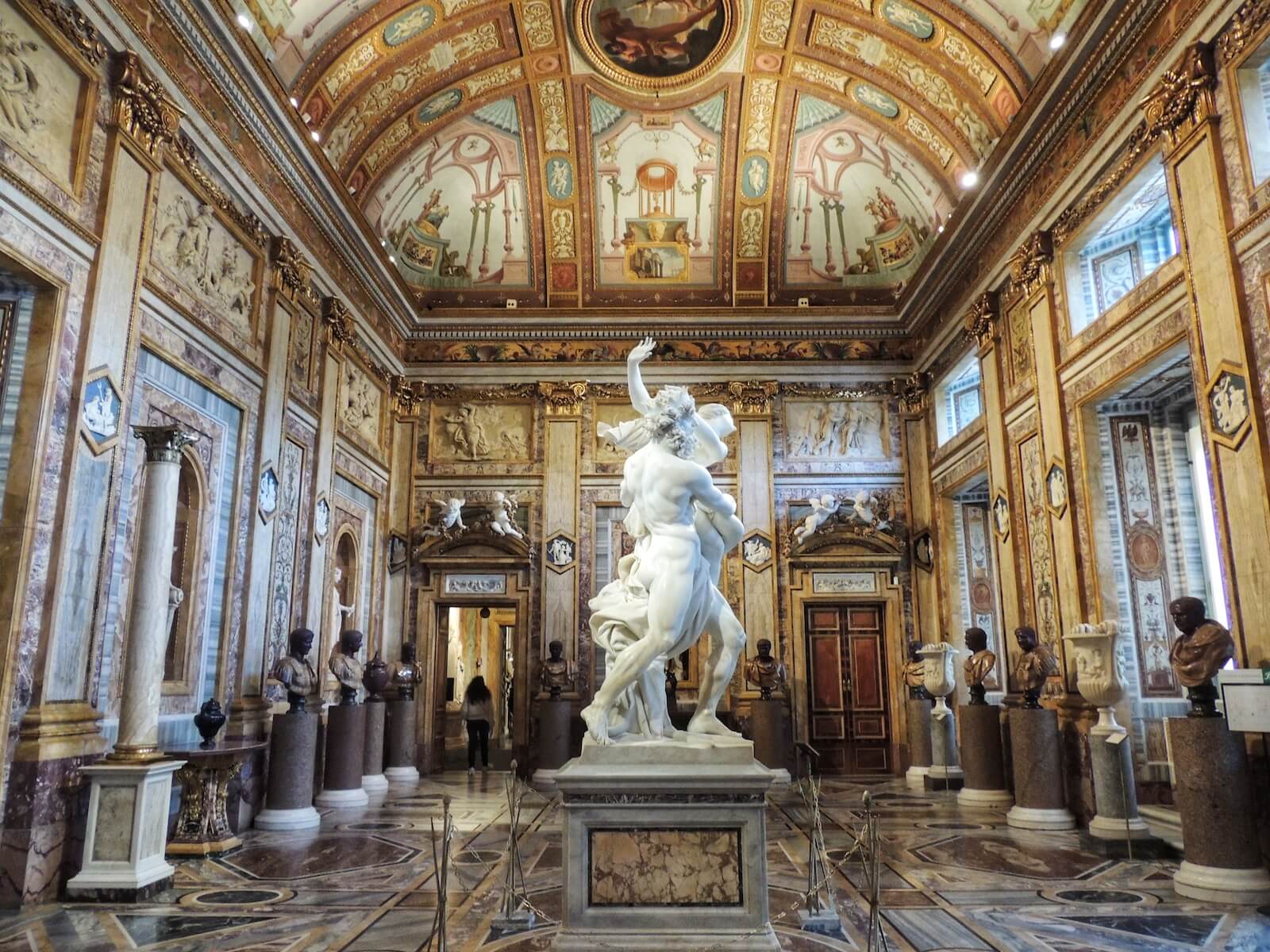
At the heart of Rome’s most beloved park, the Borghese Gallery is a jewel box of Renaissance and Baroque art. The villa’s light-filled galleries and gilded salons are home to an extraordinary array of masterpieces, justly celebrated as one of the finest private collections ever assembled. But this is no ordinary museum—it's the legacy of one of the most colourful, and controversial, figures of 17th-century Rome.
The villa was built by the worldly Cardinal Scipione Borghese, a man whose passion for art matched his appetite for power. Nephew of Pope Paul V, Scipione used his influence - and at times outright theft - to acquire works by the greatest artists of the age. His most infamous prize? Raphael’s Deposition, brazenly stolen from a Perugian altar by the cardinal’s henchmen and now proudly displayed in the gallery.
Scipione was not only a ruthless collector, but also a bold patron whose eye for talent helped shape the course of Baroque art. It was here that the young Gianlorenzo Bernini made his name. His early sculptures for the cardinal, including the breathtaking Apollo and Daphne and Rape of Proserpina, astonished Roman society with their uncanny lifelikeness and sensual energy, launching Bernini toward superstardom.
The villa’s intimate scale means you’re never more than an arm’s reach from these masterpieces. Once you’ve finished admiring the Berninis, Caravaggio will stop you in your tracks. The gallery boasts 6 coveted paintings from the dark master - the largest collection of his works anywhere in the world. None are more arresting than David with the Head of Goliath, where the giant’s severed head bears the artist’s own tortured features.
For art, drama, and the heady spirit of Baroque Rome, there’s no place quite like it.
Palazzo Doria Pamphilj
In a city where opulent palaces lurk around every bend, Palazzo Doria Pamphilj stakes its claim as the ultimate aristocratic hideaway. This sprawling pile occupies a whole block of central Via del Corso, and the historic family seat still belongs to the Doria Pamphilj clan whose fortune peaked in 1644 when Giovanni Battista Pamphilj became Pope Innocent X. Think gilded salons, glittering mirrors, and a private gallery where Velázquez’s brooding Pope Innocent X holds court beside Caravaggio’s lyrical Rest on the Flight into Egypt and melancholy Penitent Magdalene amongst other highlights.
As you slip from room to lavish room you’ll spy many of the greatest masters of Italian art represented on the walls. Titian? Check. Raphael? Yup. Carracci? He’s here too! But perhaps the highlight of the palace is the Gallery of Mirrors: a long salon where light refracts off gilt frames and plush damasks, seeming to conjure the hush of a 17th-century concert or the gaiety of a Baroque ball.
Amazingly, the Pamphilj family still lives in a wing of this palace, so visiting feels like peeking behind the velvet curtain of Baroque nobility. For extra insight from the horse’s mouth be sure to pick up the complimentary audioguide, where current owner Jonathan Pamphilj himself gives his personal take on the mind-blowing family collection.
Palazzo Colonna
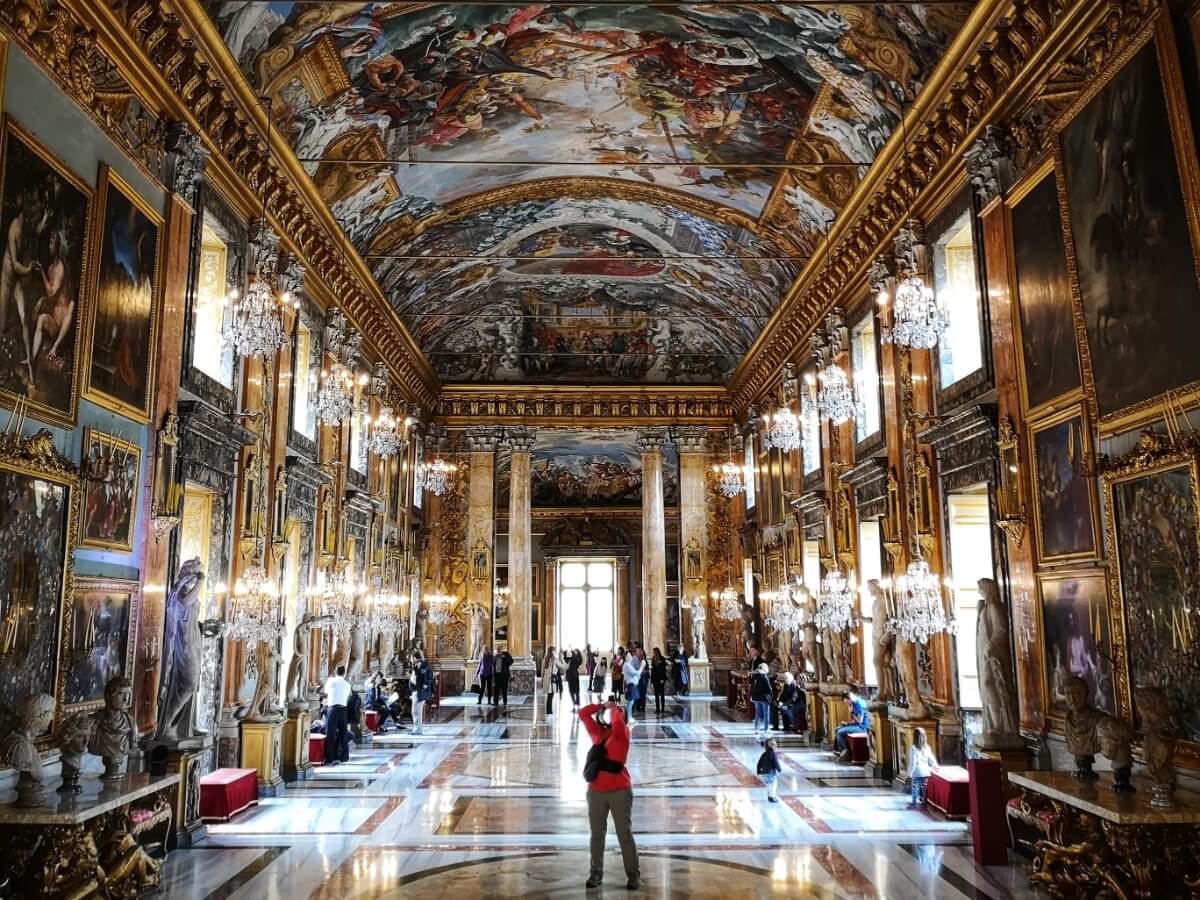
If one place can match the grandeur of the Doria Pamphilj, it’s, Palazzo Colonna. Tucked away on a narrow street not far from the Trevi fountain, the long-time home of the Colonna family - who have sat near the top of Rome’s aristocratic pecking order for more than 800 years - really does have to be seen to be believed.
As soon as you set foot in these lavish, marble-lined halls, you realize what wealth really meant in Baroque Rome. The interior is every bit as opulent as Versailles, and the palace’s Great Hall is longer than the Hall of Mirrors at its more famous French cousin. Precious colored marbles and gilded mirrors dazzle the eye, and that’s even before you look upwards to discover the amazing illusionistic ceiling frescoes that celebrate Marcantonio Colonna’s glorious victory at the head of Italian fleets battling the Turks at Lepanto in 1571 - one of the proudest moments in the family’s glittering history.
Beyond the propaganda, the Colonna art collection is just as dazzling. Rubens and Veronese, Guercino and Bronzino are just some of the heavy-hitters to look out for. But the highlight is a much humbler affair that take us far from Baroque bombast: Annibale Carracci’s The Bean Eater is a revolutionary, warts-and-all portrait of a peasant tucking into a bowl of pottage that is considered to be the first true genre painting in the history of art.
Villa Farnesina
On the banks of the Tiber in Trastevere lies one of the most exquisite gems of Renaissance Rome: the Villa Farnesina, an airy humanistic vision of sensuality, splendour and classical beauty. Commissioned in 1506 by Agostino Chigi, banker to the popes and one of the wealthiest men in Europe, the villa was designed as a lavish suburban retreat where Chigi could combine business and pleasure: a stage for extravagant banquets, poetic flirtations and high-stakes diplomacy.
Chigi, who counted the Borgias, Medicis and Julius II among his clients, spared no expense in creating his perfect rus in urbe hideaway. He employed the renowned Baldassare Peruzzi to design a light-filled U-shaped villa set in lush gardens, and filled its walls with frescoes by Raphael, Giulio Romano, Sebastiano del Piombo, and Il Sodoma.
Amongst the dazzling Renaissance highlights on display is the Loggia of Galatea, home to a fresco by Raphael depicting the immortal sea-nymph skimming across frothing waves - a portrait, perhaps, of Chigi’s tragic mistress Imperia, as the jealous cyclops Polyphemus looks on. Above, Peruzzi painted the stars as they aligned on Chigi’s birth, creating a fascinating personal zodiac in fresco.
No less impressive is the superb Loggia of Cupid and Psyche, originally an open air colonnade where Raphael and his pupils portrayed the tale of Cupid and Psyche’s star-crossed romance in an opulent cycle of divine jealousy and erotic triumph - a wedding gift in paint for Chigi’s late-in-life marriage to his mistress Francesca. Upstairs, illusionistic landscapes stretch into eternity in Peruzzi’s Room of Perspective Views, and Il Sodoma’s intimate portrait of Alexander the Great’s wedding night offers a playful, mythic model for conjugal bliss.
Palazzo Farnese
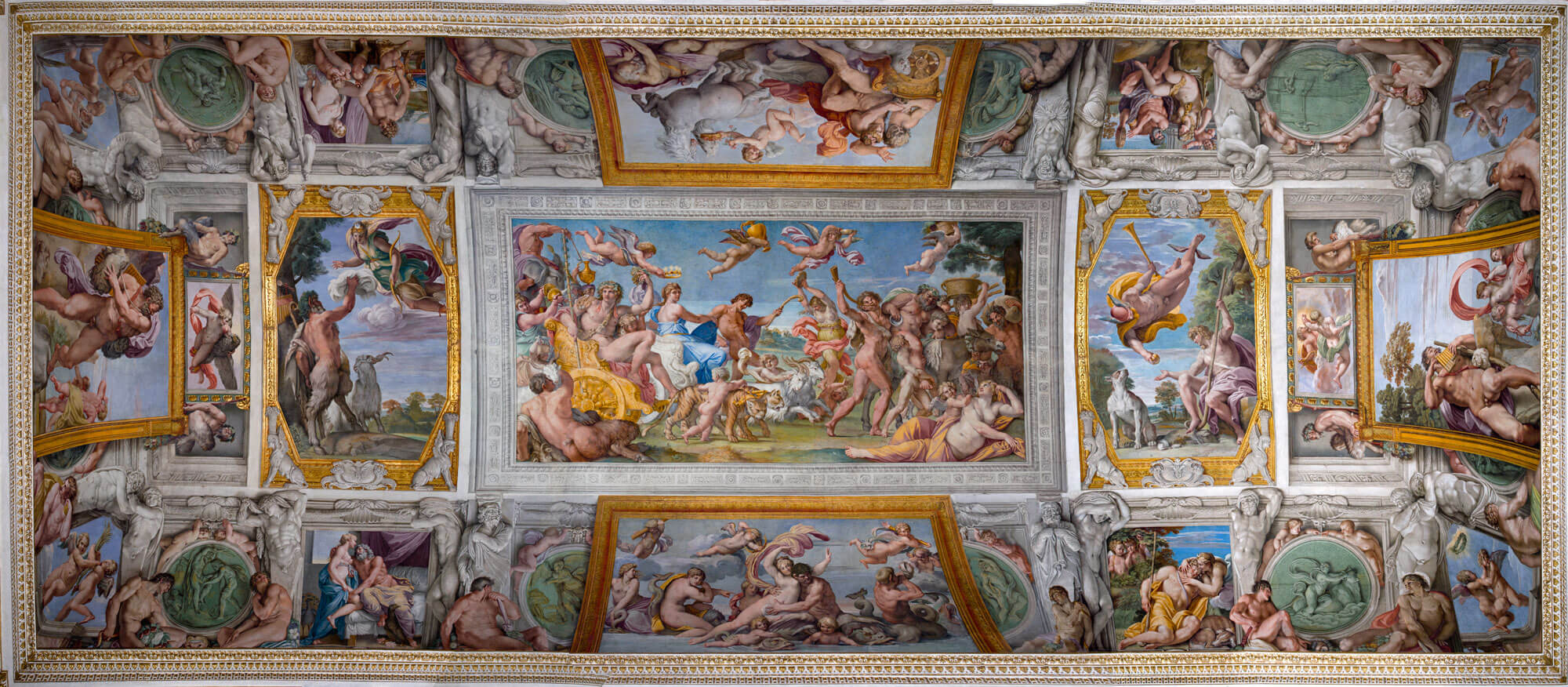
On Piazza Farnese, a majestic brick façade by Antonio da Sangallo the Younger commands your attention—and that’s before you step inside. Begun in 1514 for Cardinal Alessandro Farnese (later Pope Paul III), this High Renaissance palace was refined by Michelangelo’s hand: note the bold cornice and perfectly proportioned courtyard. But the real jewel here is Annibale Carracci’s fresco cycle: Depicting The Loves of the Gods, these superb and vibrant ceiling paintings spill across a 25 meter vault in mythic grandeur.
Though much of Palazzo Farnese now serves as the French Embassy, in recent years guided visits (strictly by advance booking) mean that this absolute highlight of early Baroque art is accessible to the public once again.
Palazzo Spada
Just a few steps from Campo de’ Fiori, Palazzo Spada stands as a refined testament to Rome’s aristocratic past and Baroque ingenuity. Originally commissioned in 1548 by Cardinal Girolamo Capodiferro, the palace was built atop pre-existing family holdings and richly embellished in time for the 1550 Jubilee. Its mannerist façade, adorned with ornamental stucco and classical references, and its elegant courtyard, filled with sculptural decoration, reflect the Renaissance taste for theatrical display and learned symbolism.
In the 17th century, the palace passed to Cardinal Bernardino Spada, who transformed the residence into both a livable noble home and a place of quiet scholarly prestige. Spada devoted decades to reworking the interiors, commissioning renovations that blended functionality with flair - most famously, his collaboration with architect Francesco Borromini, who was entrusted with expanding the sense of space in a tightly confined garden. The result was one of Rome’s most celebrated illusions: the Colonnade of False Perspective.
Completed in 1653, Borromini’s Prospettiva appears at first glance to be a sweeping 25-meter-long gallery of receding columns, culminating in a full-size statue at the far end. In reality, the corridor measures under 9 meters, and the statue of Mars is scarcely 80 centimeters tall. Sloped floors, shrinking columns, and a mathematically engineered vault conspire to trick the eye - a visual metaphor, it’s said, for the vanity of worldly appearances and the importance of discernment.
Upstairs, the Galleria Spada preserves the intellectual legacy of Cardinals Bernardino and Fabrizio Spada, who assembled one of the finest collections of 17th-century art in Rome. Still arranged in the style of a Baroque quadreria, the four-room gallery retains its original atmosphere, and features work by Guido Reni, Guercino and Artemisia Gentileschi.
Palazzo Altemps
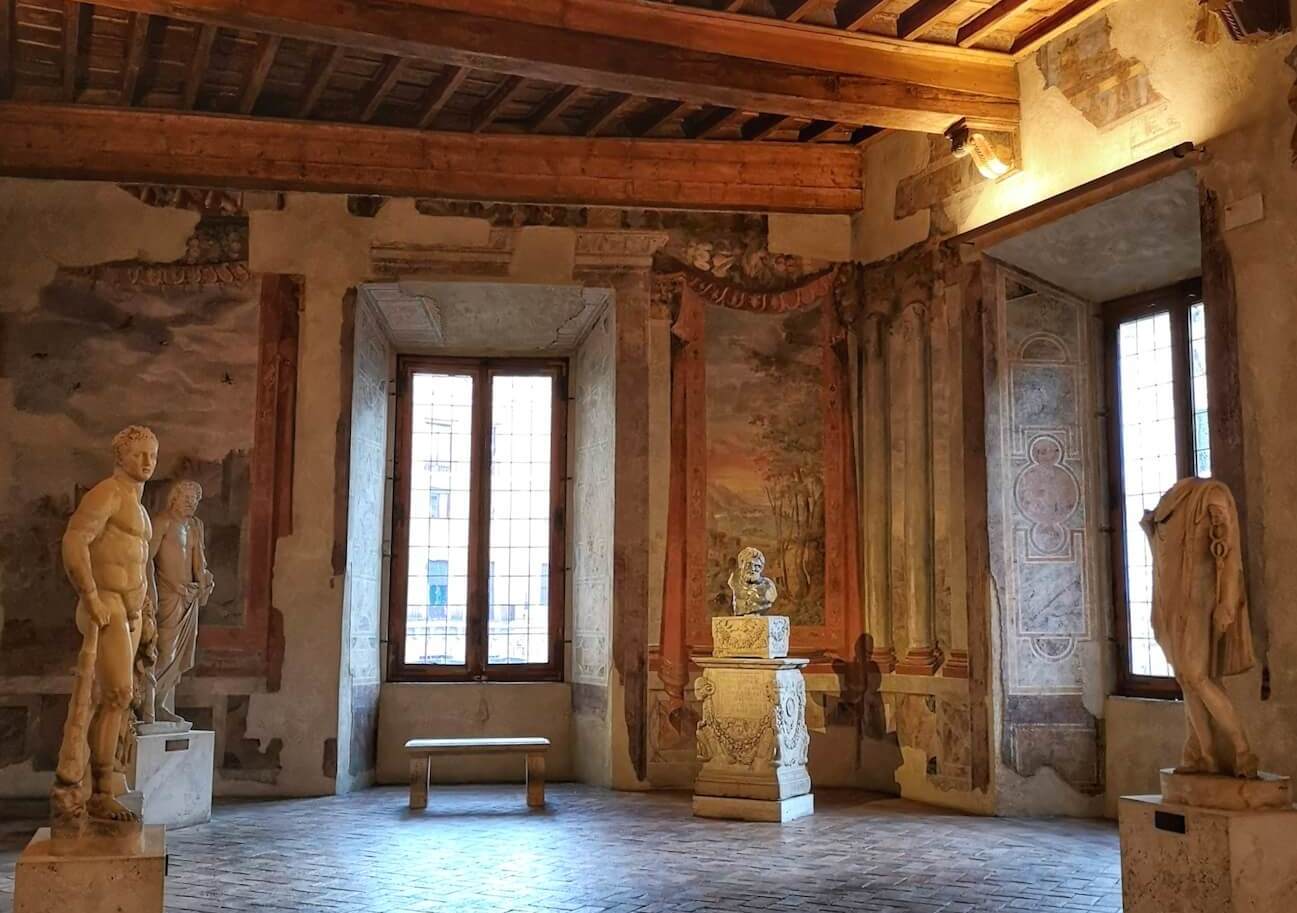
Tucked just behind Piazza Navona, Palazzo Altemps is one of Rome’s best-kept secrets. Originally a 15th-century Riario residence, it was reborn by Cardinal Marco Sittico Altemps in the 1560s, who filled it with antique sculptures as conversation pieces. Today it forms part of the Museo Nazionale Romano, its gleaming halls showcasing exquisite Roman statuary: from the graceful Ludovisi Throne to the mighty Countess Matidia.
The palace’s intimate scale lets you wander room to room as if you were Marco Sittico himself, pausing at marble busts of emperors, wandering into the Capella Ludovisi frescoes, or tracing the elegant cornices that have changed little since the Renaissance. Best of all, Altemps is seldom crowded—here you can linger over a Greek kouros or contemplate a funerary relief in hushed solitude. For anyone seeking a quieter corner of Rome’s museum circuit, Palazzo Altemps is a Renaissance gem that rewards discovery.
Villa Medici
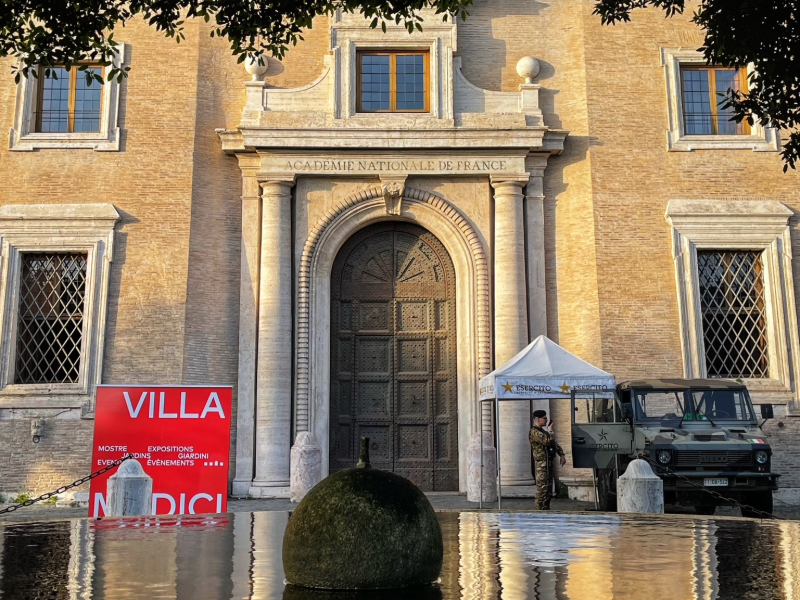
High above Piazza di Spagna, Villa Medici is where Renaissance elegance meets 21st-century creativity. Built in the 1560s for Cardinal Ferdinando de’ Medici, its serene façade leads you into terraced gardens that cascade down the Pincian Hill. In 1803, France claimed the villa as the Académie de France à Rome, and today it’s still a living studio for emerging artists.
Guided tours reveal Jacopo Zucchi’s refined frescoes in the Muses Room and Vasari’s early mannerist touches, but the real delight is the gardens: shaded groves, secret fountains, and an ornate “Cave of the Sibyl” lined with ancient marbles. Watch the sunset over St. Peter’s dome, or catch an evening concert in the French Salon—Villa Medici pulses with creative energy.
MORE GREAT CONTENT FROM THE BLOG:
- Everything you Need to Know About Visiting Rome in 2025
- Visiting Rome on a Budget
- How to visit the Colosseum in 2025: Tickets, Hours, and More
- 7 Things you Need to Know About the Trevi Fountain
- Visiting the Vatican Museums and St. Peter's Basilica: The Complete Guide
- 9 Things You Need to Know About the Pantheon in Rome
- 5 Reasons to Explore Italy with Through Eternity
- The Best Catacombs to Visit in Rome
For 25 years, Through Eternity have been organizing itineraries showcasing the best of Rome led by our resident expert guides. If you're planning a visit to the Eternal City this year, be sure to get in touch to help plan your perfect trip!





